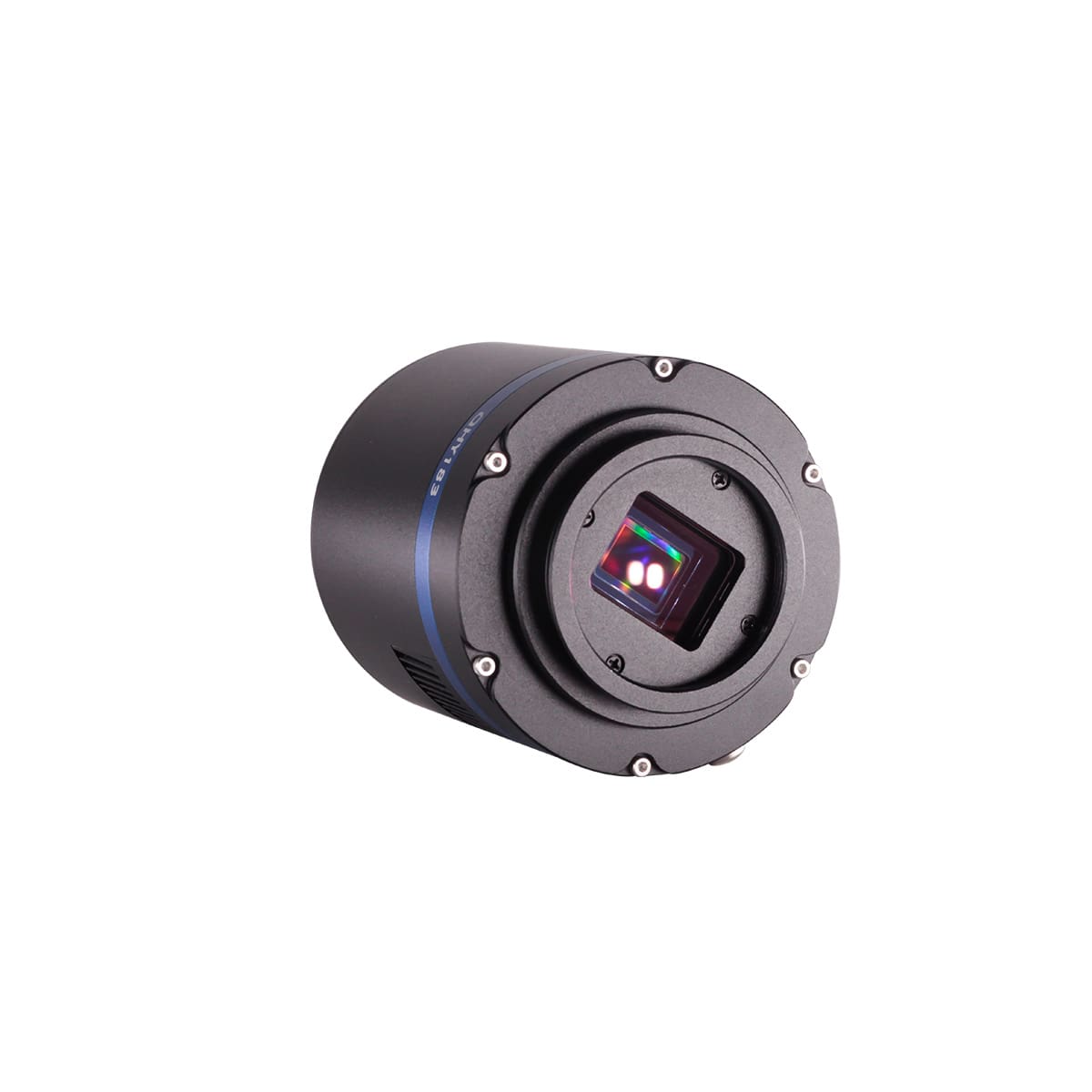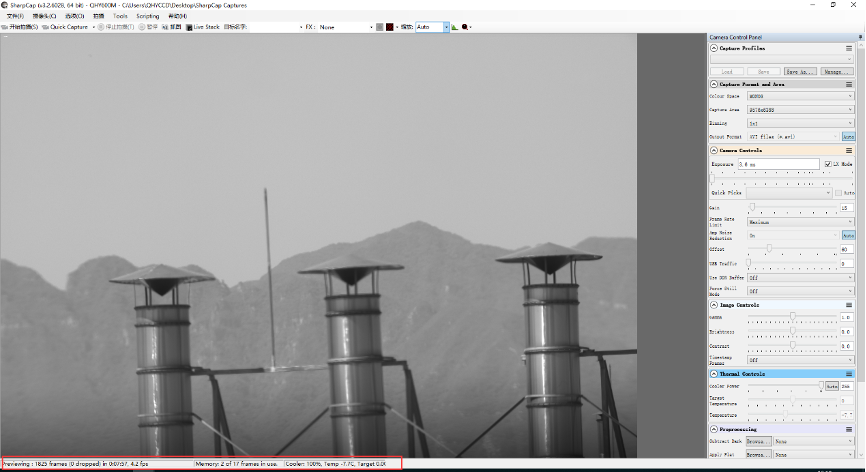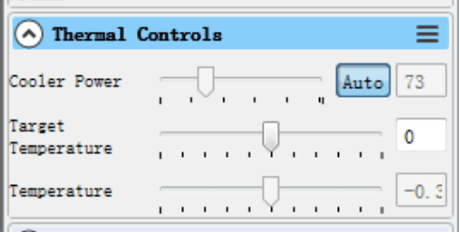DISCOVER NEW HORIZONS
C/2025 A6 (Lemmon)
-
Imaging Camera QHY600
-
Total Integration 12min
L: 450sec
R: 90sec
G: 90sec
B: 90sec
DISCOVER NEW HORIZONS
L: 450sec
R: 90sec
G: 90sec
B: 90sec

| Model | Retail Price* | Retail Price for the U.S. |
| QHY183M | $999 | $1,099 |
| QHY183C | $699 | $769 |
*Shipment Expenses,Customs or Other Taxes are NOT Included in Reference Prices

【Cocoon Nebula】
By Simon Todd, with QHY183M
QHY183 is a model designed for astrophotography beginners. It exhibits excellent sensitivity and low noise, with the back illuminated 183 having higher sensitivity and somewhat higher resolution. It is well suited to planetary and deep-space imaging particularly when mated with the CFW3 filter wheel. This model has two-stage thermal electric cooling of the sensor to about minus 40 degrees C below ambient for maximum reduction of dark current noise in long exposures.
QHY183 incorporates QHY’s Anti-Amp Glow technology to significantly reduce typical CMOS amplifier glow to a minimum, allowing excellent calibration by subtracting a dark frame.
QHY183 utilizes the Anti-Dew features common to the QHY COLDMOS cameras. Dew is moisture that condenses from the air onto the outside of the chamber window. Frost is water vapor that freezes when it comes into contact with the inside of the chamber window or the surface of the sensor. QHY has nearly 20 years of experience designing cooled cameras and these models benefit from those years of anti-dew and anti-frost design experience. To help prevent dew from forming on the chamber window heating elements are built into the light shield just above the chamber. To avoid frost from forming inside the chamber a desiccant tube is provided that can easily be attached by the user to the outside of the camera when needed to dry the internal atmosphere of the chamber and remove any built-up moisture.
QHY183 models can be used as guiding devices, too. The opto-isolated guiding port is a standard ST-4 configuration using an RJ11 style Jack. A guiding cable is included with each camera.
The 183 with its smaller higher resolution sensor is a good match to short focal length telescopes or for imaging smaller dim objects through a large scope. The larger 163 gives a greater field of view and would be a good choice for imaging larger areas of the sky such as nebula or when coupled to a longer focal length telescope to take greater advantage of the scopes full field.
The QHY183M is a one-inch, 20 Megapixel back-illuminated monochrome CMOS camera with a peak QE of 84%. The pixel size is 2.4um, yielding high-resolution with modest size telescopes. The camera is capable of producing 15FPS@20 Megapixels. It has a two-stage TEC that cools the sensor to -40C to -45C below ambient. The ADC is 12-bit / 16-bit with 1e- read noise! The computer interface is USB 3.0 and exposure times can be set from 50us to 3600sec.
| Model | QHY183M/C |
| CMOS Sensor | SONY IMX183 |
| Mono/Color | Both Available |
| FSI/BSI | BSI |
| Pixel Size | 2.4μm*2.4μm |
| Effective Area | 5544*3684 |
| Effective Pixels | 20 Megapixels |
| Sensor Size | Typical 1 inch (13.3mm*8.87mm) |
| AD Sample Depth | 12bit (output as 16bit and 8bit) |
| Fullwell | 15.5ke- |
| Frame Rate | Full Resolution: 19FPS@8BIT 7.5FPS@12BIT
ROI: |
| Readout Noise | 2.7e-@lowest gain 1.0e-@high gain |
| Dark Current | 0.0024e-/pixel/sec @ -15℃ |
| Exposure Time Range | 50us-3600sec |
| Unity Gain | 10 |
| Anti-Glow Control | Amplifer Glow Can be reduced during long exposure |
| Shutter Type | Electric Rolling Shutter |
| Computer Interface | USB3.0 |
| Built-in Image Buffer | 128MB DDR2 Buffer |
| Cooling System | Dual Stage TEC cooler (-40℃ below ambient, test temperature +20℃) |
| Optic Window Type | QHY183M: AR+AR High Quality Multi-Layer Anti-Reflection Coating QHY183C: IR-Cut Filter |
| Telescope Interface | M42/0.75 |
| Back Focal Length | 17.5mm(±0.2) |
| Anti-Dew Heater | Available |
| Weigth | 650g |
For cameras with a one-inch or smaller sensor (QHY183M/178/174/290), we recommend a combination of CFW3S-US + OAGS (optional);
| Model | BFL Consumed | Filters Supported |
| QHY183M/174M/550P | 17.5mm | 7 position
1.25inch mounted /31mm unmounted |
| CFW3S-US | 15.5mm | |
| OAGS | 10mm |
Back Focal Length (BFL), in the commercial camera field, refers to the design distance from the center of the rear lens element to the surface of the sensor. Generally, the lens will only focus correctly at infinity if the camera’s back focal length meets the standard requirements provided by the lens manufacturer. This is also true for many Multi-Purpose Coma Correctors designed to be used on telescopes before the camera.
| Optical system | Back focal length required |
| Typical Multi-Purpose Coma Corrector | 55mm – 57.5mm |
| Canon 35mm lens | 44.1mm |
| Nikon 35mm lens | 46.5mm |
Currently We only provide M42 All-in-one pack for QHY183M. Different from kits above, all adapters/spacers in this pack share M42 screws rather than M54. This kit ONLY suits the combo of QHY183M+CFW3S-US/CFW3S-SR+OAGS. Below lists some examples of using the kit (M42 Nikon/Canon adapter not included in this pack)
Note: this kit also suits other cameras with sensors one inch or smaller (e.g., QHY183/178/174/290).
The camera requires an input voltage between 11V and 13.8V. If the input voltage is too low the camera will stop functioning or it may reboot when the TEC power percent is high, causing a drain on the power. Therefore, please make sure the input voltage arrived to the camera is adequate. 12V is the best but please note that a 12V cable that is very long or a cable with small conductor wire may exhibit enough resistance to cause a voltage drop between the power supply and the camera. The formular is: V(drop) = I * R (cable). It is advised that a very long 12V power cable not be used. It is better to place the 12V AC adapter closer to the camera.
First connect the 12V power supply, then connect the camera to your computer via the USB3.0 cable. Make sure the camera is plugged in before connecting the camera to the computer, otherwise the camera will not be recognized. When you connect the camera for the first time, the system discovers the new device and looks for drivers for it. You can skip the online search step by clicking “Skip obtaining the driver software from Windows Update” and the computer will automatically find the driver locally and install it. If we take the 5IIISeries driver as an example (shown below), after the driver software is successfully installed, you will see QHY5IIISeries_IO in the device manager.
Please note that the input voltage cannot be lower than 11.5v, otherwise the device will be unable to work normally.
All-in-one Pack supports most QHYCCD models only except PoleMaster and several discontinued CCD cameras.
Download Page: https://www.qhyccd.com/download/
Video Tutorial: https://www.youtube.com/embed/mZDxIK0GZRc?start=1
Before using software, make sure you have connected the cooling camera to the 12V power supply and connected it to the computer with a USB3.0 data cable. If it’s an uncooled camera, 12V power is not needed. We recommend 64-bit Software, like SharpCAP x64 , N.I.N.A x64. etc., especially when you’re using 16bit cameras.
In NINA, you can select the device to connect to QHY Camera directly without ASCOM driver.
If connecting to the camera via ASCOM is desired, first make sure you have installed both the QHYCCD ASCOM Drivers and ASCOM Platform. Then you would select the appropriate camera driver under the ASCOM section. Then click the Connect icon. Here we take NINA as an example, but it’s similar to other software packages supporting ASCOM, like MaxDL, The SkyX, etc.
Launch SharpCap. If the software and drivers mentioned above are installed successfully, the video image will appear automatically about 3 seconds after the software loads. You will also see the frame rate in the lower left corner of the software window as shown below.

If you have already started the SharpCap software before connecting the camera, in order to open the camera, click on the “camera” in the menu bar and then select the device.
Offset adjustment. When you completely block the camera (i.e., like taking a dark frame) you may find that the image is not really zero. Sometimes this will reduce the quality of the image contrast. You can get a better dark field by adjusting the offset. You can confirm this by opening the histogram as indicated in the figure below.
If you want to enter the 16-bit image mode, select the “RAW16” mode.
By selecting the “LX” mode you can expand the exposure setting range and take long exposures.
After cooling devices connected to the 12V power supply, the temperature control circuit will be activated. You can control the CMOS temperature by adjusting the settings in the figure below. Basically, you can control the temperature of CMOS by either adjusting “Cooler Power” or clicking “Auto” and setting “Target Temperature”. You can also see the CMOS temperature at the lower-left corner of the software window.

Because of some characteristics of CMOS cameras like insufficient AD sampling rate (12/14bit), or higher gain resulting in lower read-out noise, there is no “best setting”. We should understand about read out noise, full well capacity, system gain, as well as noise from the background sky cosmic waves, to help us setting the suitable GAIN and OFFSET.
| Unity Gain | |
| 600M/C | 25 (Extended Full Well Mode) * |
| 268M/C | 30 (Extended Full Well Mode) * |
| 294Pro | 1600 (11MP Mode)
2600 (47MP Mode) |
| 410C | 90 (Low gain)
40 (High gain) |
| 367C | 2800 |
| 247C | 2200 |
| 128C | 3300 |
| 168C | 10 |
| 183M/C | 10 |
| 163M/C | 120 |
| 174GPS | 17 |
| 550P | 85 |
For beginner, we recommend that you set the gain to “unit-gain”. Unit-gain is the gain when system gain is 1 (1e/ADU). This number is shown in the table above, like the unit-gain of QHY168C is 10. In fact, increasing or decreasing a bit doesn’t make a big difference.
You could increase or decrease Gain according to the condition. For example, if your optical system is fast, like F2.2 to F5, or long exposure for more than 5 minutes without narrowband filters, then you can decrease GAIN to achieve a higher dynamic range and make better use of full well capacity. By doing so you can avoid overexposure.
If you use narrowband filter on a slow optical system like F6 to F10, or short exposure time, the amount of photons received will be less. In this case you can increase GAIN to make better use of characteristics of low read-out noise in high GAIN value.
There is no fixed “best value” for OFFSET. To set OFFSET, you should take the bias frame and dark frame at a certain GAIN value, then check the histogram of the frames.
The histogram distribution is a peak-like curve. While changing the OFFSET value, the histogram will move left or right. We need to guarantee the range of the whole curve won’t be chopped off at the end. At the same time, we need to keep a little residue on the left side, just over 0 a bit.
Pay attention that under different GAIN values, the width of this peak varies. The higher the GAIN is, the wider the distribution will be. So OFFSET value at low GAIN is not suitable for high GAIN because the curve is easily to be chopped off.
For those CMOS less than native 16-bits, the AD sampling accuracy doesn’t match perfectly with the full well capacity. At low GAIN level, the system gain will be couple electrons per ADU. The camera loses the ability to distinguish the strength of the signal because of such sampling error.
When GAIN increases, the system gain will decrease. However, increasing GAIN will limit the full charge of the well. If the system gain is 1 for a 12bit CMOS camera, the pixel will be saturated at only 4096 electrons (full well). Some bright stars will be easily saturated. This problem goes worse under fast optical system or long exposure. Over saturated objects cannot be fixed during post processing (unless you shrink stars, like in PixInsight). Also, the color saturation of the star will be affected. As result, the stars will be huge and white washed. We should decrease the gain value in this case, to gain a higher full well capacity.
Under long exposure or using fast optical system, the pixel will receive more photons. The variation of quantized noise from the photon which you can consider as natural dithering of the light intensity, will be greater than the “noise” from the sampling error. Therefore, the effect of the sampling error will diminish. By averaging multiple exposures, this will compensate the lack of depth of the picture because of the sampling error.
If the number of received photons is limited, like using narrowband filters or short exposures, we can increase the GAIN value. It is because the stars will not be easily saturated. At the same time, we limit the noise from the background cosmic radiation. Under this condition, the readout noise and quantized noise are the major factors that affect the ability to distinguish dim light or objects. By increasing the GAIN value in order to decrease the readout noise and quantized noise from sampling error, this would greatly increase the signal to noise ratio.
| Cooled CMOS Camera | Bayer |
| QHY600C/QHY268C/QHY410C/
QHY367Pro/QHY128Pro/QHY294C/ QHY247C/QHY168C/QHY165C/QHY183C/QHY174C |
RGGB |
| QHY533C/QHY178C/QHY290C/QHY224C | GBRG |
| QHY163C | GRBG |
| QHY1920C | BGGR |
| Cooled CCD Camera | |
| QHY8L-C | GBRG |
| QHY10-C | RGGB |
| QHY12-C | BGGR |
| Planetary and Guiding | |
| QHY5III174C | RGGB |
| QHY5III178C | GBRG |
| QHY5III224C | GBRG |
| QHY5III290C | GBRG |
| QHY5III462C | GBRG |
| QHY5III485C | RGGB |
| QHY5L-II-C | GRBG |
| QHY5P-II-C | GBRG |
| QHY5III585C | RGGB |
| QHY5III678C | RGGB |
| QHY5III715C | GBRG |
| QHY5III568C | RGGB |
Now the ratio R”:G”=(R+bias)/(2R+bias) and it is not equ to 1:2. It shows the bias will effect the true value of the R:G. And the ratio of R:G will arious when the image light changed. It is hardly to correct with a fixed ratio.
But for DSO capture, You should keep the offset above zero and avoid the background is cut off. A background from 1000-5000 is a good value(16bit mode) for DSO imaging.